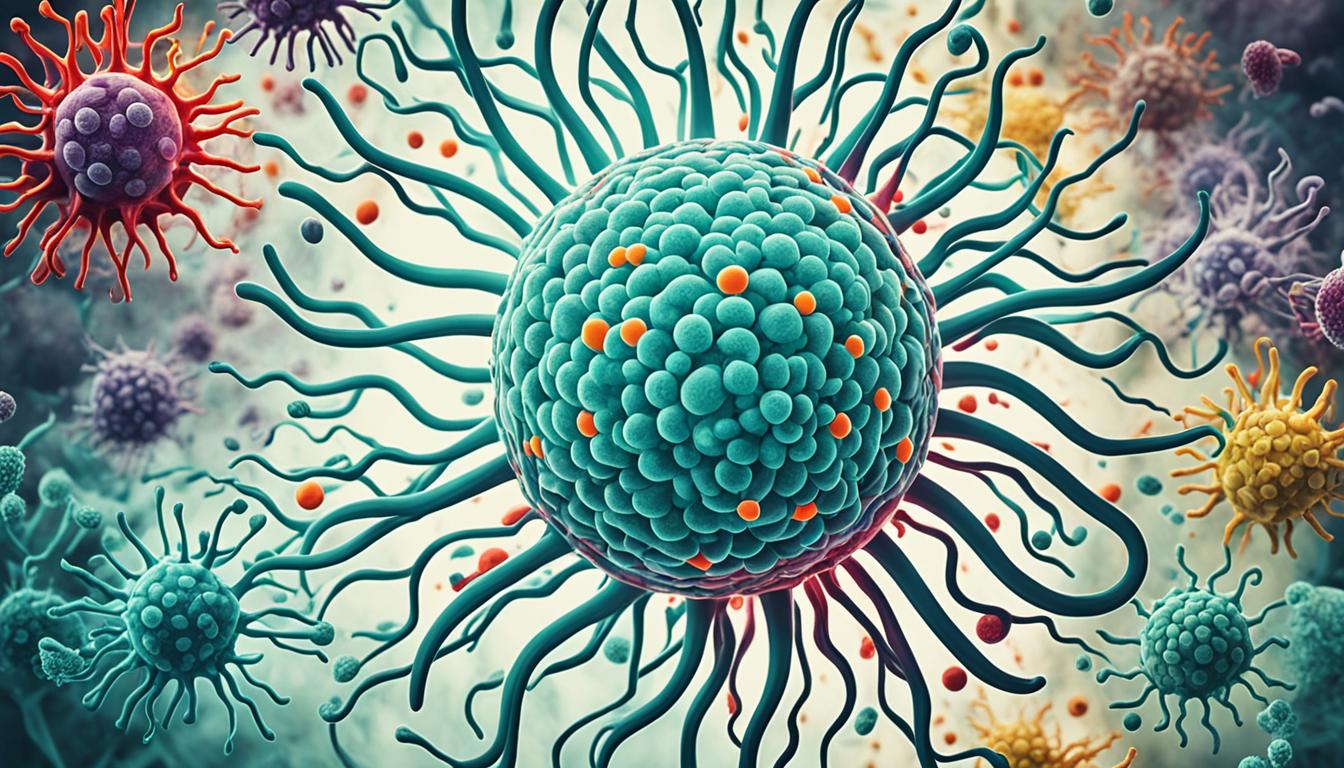Filoviruses, like Ebola and Marburg viruses, cause Filovirus diseases. They’re known for their severe symptoms, including bleeding, liver issues, and clotting problems. These diseases can lead to shock and even death. Common signs are fever, chills, headache, and muscle pain.
They can also result in stomach ache, a sore throat, and feeling sick. About 30 to 90% of people with these diseases die. Not all strains of Ebola are as dangerous to people.
Right now, there’s no precise treatment for Filovirus diseases. But, scientists are exploring how stem cell therapy might help in the future.
Key Takeaways:
- Filoviruses, including the Ebola virus and the Marburg virus, are the causative agents of Filovirus diseases.
- Filovirus diseases are characterized by severe symptoms and can have a high mortality rate.
- The Ebola Reston strain is less pathogenic for humans.
- Currently, there is no specific treatment for Filovirus diseases.
- Stem cell therapy shows potential for the treatment of Filovirus diseases.
Transmission and Diagnosis of Filovirus Diseases
Filovirus diseases spread through direct person-to-person contact. This happens when you touch the blood or other fluids of an infected person. The viruses can also spread in health care settings, like hospitals, during outbreaks. However, outbreaks via tiny droplets or aerosols are not common among humans.
Diagnosis of these diseases is based on certain signs in groups of people. These signs include a fever, then bleeding, and the virus passing from one person to another. To confirm the diagnosis, doctors use tests that look for the body’s specific response to the virus. They also check for the virus’s genetic material and try to grow it in a lab. Some of these tests must be done in very safe places to avoid the virus spreading.
Transmission:
Filovirus diseases usually spread through:
- Person-to-person contact
- Touching infected persons’ blood or bodily fluids
It’s good to know the viruses can also spread in health care settings when there are Ebola outbreaks.
Diagnosis:
Diagnosing Filovirus diseases includes looking at certain signs in groups of people, like:
- A fever followed by bleeding
- The virus passing from one person to another
- Tests to see the body’s defense against the virus
- Looking for the virus’s parts and its genetic material
- Trying to grow the virus in a lab
Some tests need to be conducted in very safe places to keep everyone protected.
| Transmission | Diagnosis |
|---|---|
| Person-to-person contact | A fever followed by bleeding |
| Touching infected persons’ blood or body fluids | The virus passing from one person to another |
| In hospitals | Tests to see how the body fights the virus |
| Looking for the virus’s parts and its genetic material | |
| Trying to grow the virus in a lab |
Stem Cell Therapy for Filovirus Diseases: Hope for Treatment
Stem cell therapy is showing promise in treating diseases like Filovirus. It uses mesenchymal stem cells (MSCs). These cells can control the body’s immune response and help repair tissues. So, they could be great for fighting Filovirus infections.
Research shows MSCs might lower organ damage, boost survival, and speed up recovery. Experimenting with MSCs from different places like umbilical cords and menstrual blood has happened. They were used to help very sick COVID-19 patients, similar to Filovirus patients, in clinical trials.
The results are promising, suggesting MSCs could be great for fighting Filovirus diseases. Yet, there is still a lot to learn about their safety and effectiveness. Overall, using stem cell therapy for Filovirus diseases could be a game-changer. It offers hope for better outcomes and lower death rates in Ebola outbreaks.

